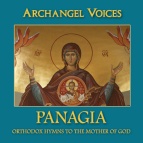It’s Monday of the week before Christmas. Do you have all your Christmas shopping done? Of course you don’t. So, here are some suggestions:
 – The Gifted Pan prosphora baking dish. For the would-be ecclesiastical baker who feels stymied by handheld seals that seem to have never been applied five minutes after what seems like pressing down with all your might.
– The Gifted Pan prosphora baking dish. For the would-be ecclesiastical baker who feels stymied by handheld seals that seem to have never been applied five minutes after what seems like pressing down with all your might.
 – Scapple. If you’re a Scrivener user, this is an excellent companion application that basically allows you to doodle your ideas without having to go quite to the intellectually self-conscious extreme of “mind-mapping”.
– Scapple. If you’re a Scrivener user, this is an excellent companion application that basically allows you to doodle your ideas without having to go quite to the intellectually self-conscious extreme of “mind-mapping”.
– Turning to Tradition: Converts and the Making of an American Orthodox Church by Fr. Dellas Oliver Herbel (Oxford University Press, 2013). I reviewed the book here; in short, it’s a great book for anybody interested in North American religious trends or Orthodox Christianity in the United States, with a lot to digest in a very reasonable length.

 – Stocking stuffer 3-pack of CDs: Cappella Romana‘s Tikey Zes: The Divine Liturgy of St. John Chrysostom (reviewed here) and Robert Kyr — A Time for Life: An Environmental Oratorio (reviewed here), with Archangel Voices‘ Panagia: Orthodox Hymns to the Mother of God (reviewed here). Three very different kinds of recordings of what one might broadly call “Orthodox music”, and each very good in its own way. The Kyr is an oratorio informed by Orthodox liturgy; the Zes is an Orthodox liturgy that at times feels like an oratorio; and Panagia is a themed recital of Orthodox choral music about the Virgin Mary. What’s funny is that the Zes disc is sung entirely in Greek but often seems quite Italian; Panagia is all in English but feels quite Russian. What can you do (or, if you like, Τι να κάνουμε)?
– Stocking stuffer 3-pack of CDs: Cappella Romana‘s Tikey Zes: The Divine Liturgy of St. John Chrysostom (reviewed here) and Robert Kyr — A Time for Life: An Environmental Oratorio (reviewed here), with Archangel Voices‘ Panagia: Orthodox Hymns to the Mother of God (reviewed here). Three very different kinds of recordings of what one might broadly call “Orthodox music”, and each very good in its own way. The Kyr is an oratorio informed by Orthodox liturgy; the Zes is an Orthodox liturgy that at times feels like an oratorio; and Panagia is a themed recital of Orthodox choral music about the Virgin Mary. What’s funny is that the Zes disc is sung entirely in Greek but often seems quite Italian; Panagia is all in English but feels quite Russian. What can you do (or, if you like, Τι να κάνουμε)?
 – Sweet Song: A Story of Saint Romanos the Melodist by Jane G. Meyer (reviewed here). A beautifully-illustrated (and not distractingly anachronistic) children’s book set in sixth-century Constantinople during an episode in the saint’s life. If you’ve got a young reader who’s interested in singing in church or who has started to develop an early fascination with Byzantine and hagiographic arcanity, this is the book you want.
– Sweet Song: A Story of Saint Romanos the Melodist by Jane G. Meyer (reviewed here). A beautifully-illustrated (and not distractingly anachronistic) children’s book set in sixth-century Constantinople during an episode in the saint’s life. If you’ve got a young reader who’s interested in singing in church or who has started to develop an early fascination with Byzantine and hagiographic arcanity, this is the book you want.
 – 75 Years of DC Comics: The Art of Modern Mythmaking by Paul Levitz (Taschen, 2010). And this would be the book for the reader who is simply a geek and unashamed to admit it. Like, you know, me. (Just sayin’, just sayin’s is all.)
– 75 Years of DC Comics: The Art of Modern Mythmaking by Paul Levitz (Taschen, 2010). And this would be the book for the reader who is simply a geek and unashamed to admit it. Like, you know, me. (Just sayin’, just sayin’s is all.)
– Finally, if none of these speak to you, I offer the possibility that you could make a donation to The Saint John of Damascus Society. We’ve got a lot of different things that we’re working on, including the Psalm 103 project but also much more, and making a gift in the name of somebody you care about would be a lovely gesture for all concerned. All gifts are tax-deductible to the extent allowed by law. The above link will take you to our website’s “Support” page; click the “Donate” button and PayPal will take care of the rest. If you’re interested in giving a gift but want to have a conversation with a person about it, get in touch with me (either via the combox here or by e-mailing richardbarrett AT johnofdamascus . org), and I’ll be happy to talk to you.
And, should you for some unknown reason be looking to give me a Christmas gift, well — you can certainly give something to the Saint John of Damascus Society, and it will definitely make me happy. I also wouldn’t sneeze at 75 Years of DC Comics. And, hey, this blog has its own “Make a Donation” button. If those options don’t speak to you, well, there’s always this.
Okay — may you all stay well the rest of the fast (and beyond, of course)!






